July 6th Scots Book of Days
July 6 1189 Richard I “the Lionheart” acceded to the English throne. Richard will restore Scotland’s independence, lost to Richard’s father. They are all Scots descent anyway.
1307 Edward 1st dies at Cumberland called Burgh upon the Sands, in full sight of (TG9-128) Scotland,
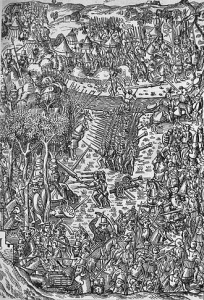 1495 Battle of Fornovo. Holy League The League of Venice was able to temporarily expel Charles VIII and the French from the Italian Peninsula. It was the first major battle of the Italian Wars, eventually resulting in the Battle of Flodden in 1513.
1495 Battle of Fornovo. Holy League The League of Venice was able to temporarily expel Charles VIII and the French from the Italian Peninsula. It was the first major battle of the Italian Wars, eventually resulting in the Battle of Flodden in 1513.
Battle of Fornovo 6 July 1495. On 27 June the Venetians and their allies established camp near Fornovo di Taro some 30 km southwest of Parma, to wait for the French. They would not have to wait long, but the Venetian Senate was not unanimous on fighting the French. Some members wanted to attack the rear guard of the French to try to seize the money, while others cautioned that Italy was risking too much in this battle, while for the French it was just one army. They had plenty more to draw upon. Wikipedia
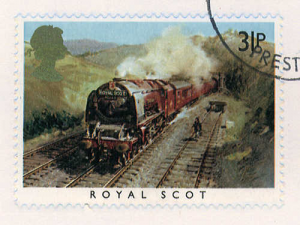 The LMS locomotive City of Lancaster, for 150th anniversary of the Great Western Railway.
The LMS locomotive City of Lancaster, for 150th anniversary of the Great Western Railway.
1535 Sir Thomas More, Saint, Scholar, Lord Chancellor of England, Chancellor of the Duchy of Lancaster, Speaker of the House of Common, and John Fisher, Bishop of Rochester, become Catholic Martyrs, 1535 Tower Hill, Stepney, London Kingdom of England. Wikipedia. Scotland remains catholic for another score and five years, until the Lords of the congregation leads parliament and the government to join the Reformation.
1553 – Knox was then told to preach in Buckinghamshire and he remained there until King Edward’s death on 6 July.
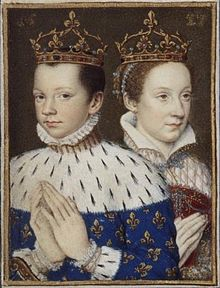 1560 – The Treaty of Edinburgh also known as the Treaty of Leith, was signed by Scotland and England, between the Commissioners of Queen Elizabeth of England with the assent of the Scottish Lords of the Congregation, and the French representatives of 15 year old King Francis II of France (King Consort of Scotland as husband of Mary Queen of Scots) to formally conclude the Siege of Leith and replace the Auld Alliance with France with a new Anglo-Scottish accord, while maintaining the peace between England and France agreed by the Treaty of Cateau-Cambresis. Leith is the port for Edinburgh. The king and his spouse Mary Stuart, Queen of Scots (painted around 1572-1574). Wikipedia.
1560 – The Treaty of Edinburgh also known as the Treaty of Leith, was signed by Scotland and England, between the Commissioners of Queen Elizabeth of England with the assent of the Scottish Lords of the Congregation, and the French representatives of 15 year old King Francis II of France (King Consort of Scotland as husband of Mary Queen of Scots) to formally conclude the Siege of Leith and replace the Auld Alliance with France with a new Anglo-Scottish accord, while maintaining the peace between England and France agreed by the Treaty of Cateau-Cambresis. Leith is the port for Edinburgh. The king and his spouse Mary Stuart, Queen of Scots (painted around 1572-1574). Wikipedia.
1586 – Treaty of Berwick Agreement of amity between Queen Elizabeth I of England and King James VI of Scotland. Wikipedia.
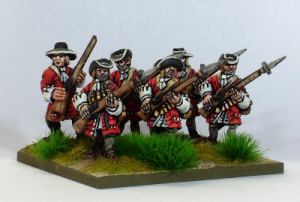 1685 Battle of Sedgemoor of “Monmouth Rebellion”. Alice Beconshaw daughter of Sir White Beconshaw of Moyles Court at Ellingham in Hampshire and his wife, Edith, daughter of William Bond of Blackmanston, Steeple, Dorset. Alice was subsequently executed on a charge of harbouring fugitives after the Battle of Sedgemoor. Wikipedia
1685 Battle of Sedgemoor of “Monmouth Rebellion”. Alice Beconshaw daughter of Sir White Beconshaw of Moyles Court at Ellingham in Hampshire and his wife, Edith, daughter of William Bond of Blackmanston, Steeple, Dorset. Alice was subsequently executed on a charge of harbouring fugitives after the Battle of Sedgemoor. Wikipedia
leagueofaugsburg.blogspot.com. The senior regiment takes the place of honour on the battlefield, the right of the line, and the Royal Scots took their rightful place at the Battle of Sedgemoor. The King’s Foot Guard (now the Grenadier Guards) and the Coldstream Guards both yielded precedence to them. The Battle of Sedgemoor fought on July 16 1685 (old Style July 6 ) ended the Dukes hopes for his father’s crown.
 1747 Scottish naval figure, John Paul Jones, was born at Arbigland near Kirkbean, Kircudbrightshire. As captain of the “Bonhomme Richard”, on 23 September 1779, he scored one of America’s greatest sea victories against Britain when he attacked a Baltic merchant fleet protected by the British warships, “HMS Serapis” and “HMS Countess of Scarborough”. When he was asked “Do you ask for quarter?”, he made his famous reply, “I have not yet begun to fight!”.
1747 Scottish naval figure, John Paul Jones, was born at Arbigland near Kirkbean, Kircudbrightshire. As captain of the “Bonhomme Richard”, on 23 September 1779, he scored one of America’s greatest sea victories against Britain when he attacked a Baltic merchant fleet protected by the British warships, “HMS Serapis” and “HMS Countess of Scarborough”. When he was asked “Do you ask for quarter?”, he made his famous reply, “I have not yet begun to fight!”.
www.bbc.co.uk/scotland/history/onthisday/july/6
1755 Battle of Monongahela River 1755 – Braddock’s Defeat, Fort Duquesne, western Pennsylvania Colony. The French and Indian War also known as the Seven Year War (1757 to 1762). Flour and beef arrived from Dunbar.
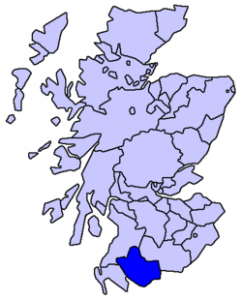 1757 John Paul (he added “Jones” later) was born on the estate of Arbigland near Kirkbean in the Stewartry of Kirkcudbright on the southwest coast of Scotland. His father, John Paul (Sr.), was a gardener at Arbigland, and his mother was named Jean Duff. His parents married on November 29, 1733 in New Abbey, Kirkcudbright. John Paul started his maritime career at the age of 13, sailing out of Whitehaven in the northern English county of Cumberland, as apprentice aboard the Friendship under Captain Benson. Paul’s older brother William Paul had married and settled in Fredericksburg. Virginia, the destination of many of the youngster’s early voyages. Kirkcudbrightshire was a county of south-western Scotland. It was also known as East Galloway, forming the larger Galloway region with Wigtownshire. Kirkcudbrightshire bounded on the north and north-west by Ayrshire, Kirkcudbrightshire, Scotland, County (until circa 1890)
1757 John Paul (he added “Jones” later) was born on the estate of Arbigland near Kirkbean in the Stewartry of Kirkcudbright on the southwest coast of Scotland. His father, John Paul (Sr.), was a gardener at Arbigland, and his mother was named Jean Duff. His parents married on November 29, 1733 in New Abbey, Kirkcudbright. John Paul started his maritime career at the age of 13, sailing out of Whitehaven in the northern English county of Cumberland, as apprentice aboard the Friendship under Captain Benson. Paul’s older brother William Paul had married and settled in Fredericksburg. Virginia, the destination of many of the youngster’s early voyages. Kirkcudbrightshire was a county of south-western Scotland. It was also known as East Galloway, forming the larger Galloway region with Wigtownshire. Kirkcudbrightshire bounded on the north and north-west by Ayrshire, Kirkcudbrightshire, Scotland, County (until circa 1890)
In 1372 Archibald the Grim, a natural son of Sir James Douglas “the Good”, became Lord of Galloway and received in perpetual fee the Crown lands between the Nith and the Cree. He appointed a steward to collect his revenues and administer justice, and there thus arose the designation of the “Stewartry of Kirkcudbright”.
The county is still called The Stewartry by its inhabitants and forms the Stewartry area of Dumfries and Galloway Council.
1777 2nd Battle of Ticonderoga. Lake Champlain, New York State in the United States of America. 21st Royal Scots Fusiliers, now the Royal Highland Fusiliers, 62nd Foot: later the Wiltshire Regiment, then the Duke of Edinburgh’s Royal Regiment,
1781 On July 6, the French and American armies met at White Plains, north of New York City. Rochambeau, seven years older than Washington, never challenged Washington’s authority, telling Washington that he had come to serve, not to command. Washington, for his part, solicited Rochambeau’s advice and took it. Washington and Rochambeau discussed where they should launch a joint attack. Washington believed that an attack on New York was the best option, as the 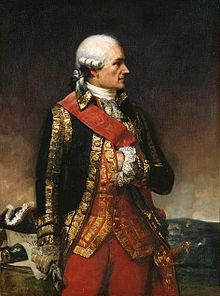 Americans and French outnumbered the British 3 to 1. Rochambeau disagreed, arguing that the fleet under Admiral de Grasse, which was headed to the West Indies, was going to head to the American coast afterwards where easier operations other than attacking New York could be done. Cornwallis, after Cowpens, and the chase through North Carolina and South Carolina headed toward Yorktown. Thus Washington takes to Yorktown. Rochambeau wearing the sash of the Order of Saint Louis.
Americans and French outnumbered the British 3 to 1. Rochambeau disagreed, arguing that the fleet under Admiral de Grasse, which was headed to the West Indies, was going to head to the American coast afterwards where easier operations other than attacking New York could be done. Cornwallis, after Cowpens, and the chase through North Carolina and South Carolina headed toward Yorktown. Thus Washington takes to Yorktown. Rochambeau wearing the sash of the Order of Saint Louis.
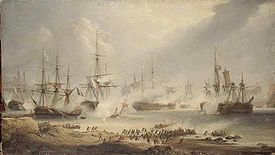 1801 The Battle of Algeciras. Bay of Gibraltar. Lord Cochrane, who was present in Desaix after the capture of the brig-sloop Speedy and then, after an exchange of prisoners, watched from the garden of the Commissioner’s house as the British squadron chased the allied squadron on 12 July.
1801 The Battle of Algeciras. Bay of Gibraltar. Lord Cochrane, who was present in Desaix after the capture of the brig-sloop Speedy and then, after an exchange of prisoners, watched from the garden of the Commissioner’s house as the British squadron chased the allied squadron on 12 July.
The battle of Algeciras by Morel-Fatio, oil on canvas.
1827 Treaty of London by Britain, France and Russia to end war between Turks and Greeks. Tytler’s Britannica, History of Scotland.
1940 North Atlantic. A dozen British merchant Marine ships crossing the Atlantic, zigzagging to avoid Nazi submarines, ferrying 600 freight cars worth of American rifles (half a million), field guns, machine guns, ammo, shells, cartridges, carrying the guns from New Jersey to England. Backstory, the British evacuation of Dunkirk (May June 1940) and other evacuations from Brest, Cherbourg, St. Malo, and St. Nazaire, left all the Brits guns and equipment on the beaches of France. The United States sold a half million rifles and more to restock and rearm Scotland and England against a threatened Nazi invasion upcoming in the Battle of Britain (June to November 1940).
- In the dark days following the British Expeditionary Force’s evacuation from Dunkirk in 1940, Great Britain was a nation virtually disarmed. And not just by the need to abandon equipment on France’s beaches to save British “Tommies” to fight another day, but by the policies of its own government. The days of devotion to civilian markmanship, “volunteer rifle clubs” and the idea that there should be “a rifle in every cottage,” as proposed by the Prime Minister Marquis of Salisbury in 1900, had given way to restrictive gun control laws that required subjects to demonstrate “good reason” to merely obtain a handgun or rifle. So with Hitler’s legions poised to cross the English Channel, the British people were defended by an ill-equipped and defeated army and a “Home Guard” armed with little more than sporting shotguns and pikes.
- http://www.freerepublic.com/focus/news/650257/posts
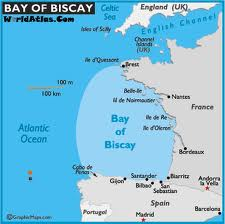 1942 July 6 The Royal Marines Boom Patrol Detachment (RMBPD) was formed and based at Southsea, Portsmouth. Operation Frankton, the December 1942 raid by canoe-borne British commandos on shipping in Bay of Biscay port of Bordeaux Harbour.
1942 July 6 The Royal Marines Boom Patrol Detachment (RMBPD) was formed and based at Southsea, Portsmouth. Operation Frankton, the December 1942 raid by canoe-borne British commandos on shipping in Bay of Biscay port of Bordeaux Harbour.
Bay of Biscay Atlantic ocean. Bordeaux right middle. Royal Navy submarine HMS Tuna (N94) left from Holy Loch in Scotland. Admiral Louis Mountbatten, the commander of Combined Operations, deemed the raid “the most courageous and imaginative of all the raids ever carried out by the men of Combined Operations.” Two of ten survived the raid. Lieutenant J. W. Mackinnon and Sergeant S. Wallace did not. Wikipedia.
Mackinnon Crest: A boar’s head erased and holding in its mouth the shank of a deer all Proper. Motto: ADENTES FORTUNA JUVAT. [from Latin: “Fortune assists the daring”]. Badge: pine (Scots Fir) or St John’s wort (St. Columba’s flower) Chief: Madam Anne Mackinnon of Mackinnon
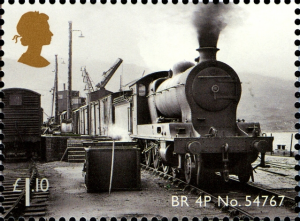 Set of four postage stamps showing classic Scottish Locomotives. The set was issued by Great Britain on 8 March 2012. www.stampboards.com
Set of four postage stamps showing classic Scottish Locomotives. The set was issued by Great Britain on 8 March 2012. www.stampboards.com
£1.10 – BR 4P No. 50767. Highland Railway, 4-6-0, LMS and BR, No 54767 Clan Mackinnon is seen at Kyle of Lochalsh on a fish train. These locomotives were among the last Highland Railway locomotives to remain in active service.
1946 George Walker Bush (born July 6, 1946) President, 46th Governor of Texas. Yale 1968, Harvard Business 1975. Scottish ancestry. 24th in Descent from Robert de Umfreville, 2nd Earl of Angus, grandson of Alexander Comyn
2nd Earl of Buchan.
1988 the Piper Alpha oil platform in the North Sea was rocked by a huge explosion. 167 men died. www.bbc.co.uk/scotland/history/
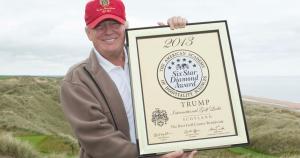 2012 Trump to open SIX Star Scottish course The Great Estate – The Menie Estate, upon which the course is built, is protected by numerous charities and societies. The sand dunes featured throughout the course are a part of a site of scientific interest. Aberdeen.
2012 Trump to open SIX Star Scottish course The Great Estate – The Menie Estate, upon which the course is built, is protected by numerous charities and societies. The sand dunes featured throughout the course are a part of a site of scientific interest. Aberdeen.
http://i1.dailyrecord.co.uk/incoming/article1939544.ece/ALTERNATES/s1200/Donald-Trump.jpg Great Grandson of Alexander MacLeod, a crofter and fisherman, was born 10 May 1830 in Stornoway, Ross, Scotland.
Disclaimer: The author of each article published on this web site owns his or her own words. The opinions, beliefs and viewpoints expressed by the various authors and forum participants on this site do not necessarily reflect the opinions, beliefs and viewpoints of Utah Standard News or official policies of the USN and may actually reflect positions that USN actively opposes. No claim in public domain or fair use. © John Choate
Utah Standard News depends on the support of readers like you.
Good Journalism requires time, expertise, passion and money. We know you appreciate the coverage here. Please help us to continue as an alternative news website by becoming a subscriber or making a donation. To learn more about our subscription options or make a donation, click here.
To Advertise on UtahStandardNews.com, please contact us at: ed@utahstandardnews.com.


Comments - No Responses to “July 6th Scots Book of Days”
Sure is empty down here...